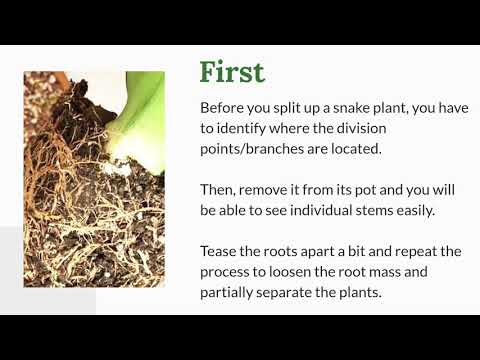Have you heard of snake plant pups?
They are these tiny little sprouts at the bottom of your snake plant leaves…
They are the future generation of the snake plant clan…
… and they tend to need a new home to live…
… whenever their mothership had been crowded with the previous clan.
Hear it from Kian!
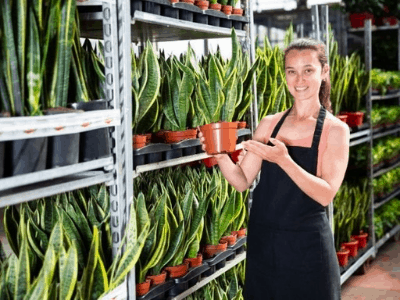
I remember purchasing my very first snake plant from the nursery…
It was a Sansevieria trifasciata with only three main leaves on them…
Now, I can’t even count how many had grown ever since…
Also, my snake plant flowers because of that…
So I finally decided to divide them and put them in their new home…
… to make them feel brand new again and good to look at.
After that repotting and dividing, I can sense that my snake plant had regain new spirit…
… and ready to keep on giving their best in living their life for years to come!
That’s exactly it!
Repotting Sansevieria is a major part of their care…
But not just any kind of repotting, because you need to divide as well…
This process is as if you’re letting your 17 year old child go out from your house…
… and find their own growth in another house.
Hence…
Why Divide Snake Plant Pups?
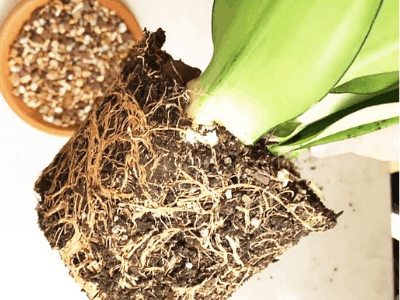
It is essential to divide and separate snake plant pups…
… once they are fully root-bounded to avoid damage in the future.
Once your snake plant is struggling to stand up straight and tend to topple off…
… that means you plant has formed root balls which prevent nutrients from being consumed.
This is because there would be no more soil in the pot once your snake plant’s pot is too full…
It is definitely time to divide!
When Should I Divide Snake Plant Pups?
The best time to transplant this is in late winter or spring…
This will put the plants during a non-active growth stage…
Dormancy is defined as the state of being not active or growing at the present time but able to be active later on. This is an important trait for plants that enables them to survive periods that are adverse for growth like drought, cold or heat. The development of dormancy during evolution enabled plants to inhabit environments that would be lethal for continuously growing plants without a dormant phase.
Wim J.J. Soppe and Leónie Bentsink in Dormancy in Plants
You will know it’s time when roots start leaking through the drainage holes in your pot…
Plastic pots tend to bulge a bit…
When watering, the water will seem to pour straight down the tube without remaining in the soil…
Turn the plant over by grasping its base gently…
Look inside the pot and see if the roots run out the bottom…
Does it appear stuck, or does it slide out with ease?
If it’s rooted out, it’s time to put it in something bigger…
Even though mother in law’s tongue likes to be rooted…
… it doesn’t do well when that’s all that’s left in the pot are roots.
If this is true, or if you see any of the other signs, it’s time to get it in check!
How To Divide Snake Plant Pups: Step-By-Step
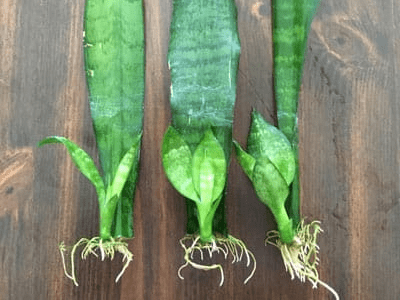
Before you split up snake plant pups, you have to identify where the division points/branches are located…
Recognize where the leaves/branches vanish into the soil…
Then, remove it from its pot and you will be able to see individual stems easily…
Take hold of one of those stems and gently wiggle it…
Tease the roots apart a bit and repeat the process to loosen the root mass and partially separate the plants…
You can use a Japanese garden knife or sterilized razor blade to separate the plants as you wish…
Keep 2-3 plants together, or separate each plant into its own pot, depending on how you prefer it to look…
Divide the plants; then repot in separate pots…
Choose a pot that is roughly 1-2 inches wide as your divided plant’s root cluster…
The best part is that you only need to divide and repot your snake plant every 2-3 years…
Division is beneficial when you have cultivars that fail to propagate by leaf cuttings…
Since you aren’t just taking a piece from a plant, but an entire smaller plant…
… this is your best method to propagate them.
New sections of snake plants may still be heavy and tend to fall…
You can tie them up using strips of pantyhose, wire, or twine…
You can use bamboo, small stakes, or anything that will act as a support…
Putting Snake Plant Pups in a New Home

After dividing your snake plant pups, you need to put them in a new pot…
Your first step is to select a new pot…
Mother in law’s tongue tends to be rather top-heavy as a result of its tall leaves…
You need to choose a pot that is wider than it is deep, so the plant doesn’t tip over…
Choose a pot that is about 1-2′′ wider than the current pot…
Avoid increasing the size too dramatically…
Extra soil may cause pockets of moisture which can lead to root rot…
The soil needs to be exceptionally well-draining for this plant since it thrives on being a little dry…
An ideal potting soil is a succulent mix which is easily amended…
Even though adding some compost is good, do not add too much…
Compost tends to hold moisture, which may harm the snake plant roots…
A little bit goes a long way here…
Place some potting mix in the new pot and set the plant atop it…
Plant it to the same depth in the new pot, but do not exceed 2′′ from the pot’s edge…
Add or remove soil as needed…
If you tamp the soil down too hard, you won’t be able to support the plant…
Ensure it is in there well enough, and water it in…
If it sinks after watering, you have to add more soil to keep the right height…
Snake Plant Pups Post-Transplant Care
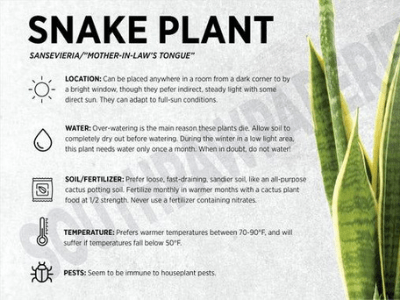
Avoiding transplant shock is very important, especially if you had to trim some rotten roots…
You don’t want the plant stressed out too much for a while…
Most snake plants can tolerate full sun conditions…
… but they require bright but indirect light for at least one month after transplant…
Summer transplants need to be kept out of the sun for a while…
Do not fertilize your plant for at least a month, too…
This gives the roots time to re-establish themselves…
The last thing you want is to burn your plant’s roots while they’re still tender from moving!
Keep the pot moist, but do not overwater…
If you use a saucer, make sure it is drained of any excess water remaining in it every time you water…
Too much moisture can promote rot development…
To sum it up…
Your snake plant pups just need room to grow…
As a new being, they need to be independent…
… and receive the brand new nutrients they deserve in a new pot.
This is why you should divide and repot your snake plant pups…
The above article had provided you with the steps needed…
… to do this process, so give it a go and see how it benefits you.
Don’t forget to take the post-transplant care seriously as well!
Conclusion
If you happen to still have any queries…
Regarding snake plant pups or snake plant in general…
Don’t hesitate to let us know…
You can comment down below or contact us…
Check out more posts in this website like this one here!
Have an awesome gardening journey!

